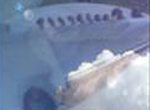xysoom


Registrato: Mag 15, 2020
Messaggi: 1676
|
 Oggetto: When to Use Hemostatic Agents in EMS Oggetto: When to Use Hemostatic Agents in EMS
Inviato: 12-12-2022 8:32:14 |
 |
When to Use Hemostatic Agents in EMS
Hemorrhage is responsible for about 40 percent of the deaths following traumatic injury, with 33 to 56 percent of those deaths occurring during the prehospital period (Kauvar, Lefering, & Wade, 2006). Early trauma care stresses the importance of minimizing blood loss in the prehospital environment. There is no debate about the importance of hemorrhage control as a first step in reducing death following traumatic injury.To get more news about hemostatic dressing, you can visit rusuntacmed.com official website.
Hemostatic agents and EMS
Increasingly, EMS systems across the country are adding topical hemostatic agents to their prehospital treatment of hemorrhage (Kerby & Cusick, 2012). Topical hemostatic agents are available as powders, granules or dressings composed of traditional gauze or dressings impregnated with the active agent. The ideal hemostatic agent (Granville-Chapman, Jacobs, & Midwinter, 2011) should be:
Mucoadhesive agents react with blood to create a seal over the wound, which arrests continuing blood flow. Both HemCon® and Celox™ utilize a granular chitosan salt derived from the shells of marine arthropods (Granville-Chapman, Jacobs, & Midwinter, 2011). These salts, which are positively charged, react with and bind to negatively charged red blood cells rapidly forming a cross-linked barrier clot which seals the injured vessel (Burkatovskaya et al., 2006; Kozen, Kircher, Henao, Godinez, & Johnson, 2008).
Researchers found HemCon® to be clinically superior to standard gauze in a low-pressure, high-flow model of venous bleeding (Pusateri et al., 2003), although this type of injury might not represent the injury patterns encountered in the prehospital environment (Lawton, Granville-Chapman, & Parker, 2009). In a high-pressure model of uncontrolled arterial hemorrhage, HemCon® was initially effective at controlling but could not sustain hemostasis (Kheirabadi, Acheson, Sondeen, Ryan, & Holcomb, 2004).
Despite this failure, a retrospective review of 34 cases of hemorrhage treated with HemCon® by Portland, Ore. firefighters revealed bleeding control in 79 percent of the cases (Brown, Daya, & Worley, 2009). On the other hand, in a side by side comparison of commonly used topical hemostatic agents in a swine model of uncontrolled hemorrhage, Celox™ was the only agent that improved short term survival (Kozen, Kircher, Henao, Godinez, & Johnson, 2008).
Factor concentrators: Super dehydrator
Factor concentrators, such as QuikClot® rapidly absorb water from the blood at the injury site, which concentrates platelets and other intrinsic clotting factors resulting in faster clot formation. The active ingredient in QuikClot® is zeolite, an inert volcanic mineral that rapidly absorbs water in an exothermic (heat-producing) reaction.
In addition to its water absorbing properties, an in vitro examination revealed zeolite also rapidly increases calcium ion concentration of blood, which promotes rapid clot formation (Li et al., 2013). In the first generation of QuikClot®, healthcare providers poured the zeolite granules directly into the wound. However, physicians soon found the exothermic reaction was significant enough to cause burns and tissue necrosis (McManus, Hurtado, Pusateri, & Knoop, 2007; Rhee, et al., 2008; Wright et al., 2004). As a result, the granular form of QuikClot® is no longer available.
The second generation of QuikClot® replaced the granules with larger zeolite beads and packed them into a small mesh bag (QuikClot® ACS+™) that was inserted into the bleeding wound. The bag facilitates removal of the product during surgery. Changes in the second generation of the product reduced the temperatures created by the reaction and produced a safer topical agent (Ahuja et al., 2006).
|
|
![Show/hide content [x]](themes/dragonfly/images/minus.png) Menu Principale
Menu Principale HOME
HOME NADA YOGA
NADA YOGA AMBIENTI SONORI
AMBIENTI SONORI VISUAL SOUND
VISUAL SOUND MUSICA LIVE
MUSICA LIVE INDIAN MUSIC
INDIAN MUSIC UTILITA'
UTILITA' AREA RISERVATA
AREA RISERVATA![Show/hide content [x]](themes/dragonfly/images/minus.png) Info Utente
Info Utente![Show/hide content [x]](themes/dragonfly/images/minus.png) Floating Sarod
Floating Sarod![Show/hide content [x]](themes/dragonfly/images/minus.png) Discografia
Discografia![Show/hide content [x]](themes/dragonfly/images/minus.png)
![Show/hide content [x]](themes/dragonfly/images/minus.png) Visite
Visite






